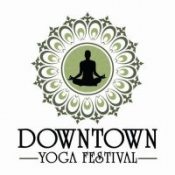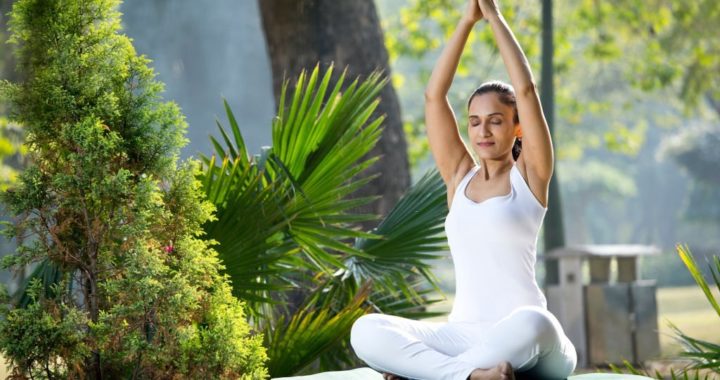Are you eager to embark on a yoga journey but unsure of how to get started? Yoga is a wonderful practice that benefits both the body and the mind. It promotes flexibility, strength, relaxation, and overall well-being. If you’re a beginner, it’s important to start with poses that are suitable for your level of experience. In this article, we will explore ten essential yoga poses for beginners that will help you establish a strong foundation for your yoga journey.

Introduction to Yoga
Yoga, an age-old practice with its roots in India, encompasses a combination of physical postures (asanas), mindful breathing exercises (pranayama), and meditation techniques.Yoga is a holistic approach to wellness, focusing on the integration of the body, mind, and spirit. It fosters a sense of equilibrium, enhances flexibility and strength, and cultivates inner serenity.
Essential Yoga Poses for Beginners
Mountain Pose (Tadasana)
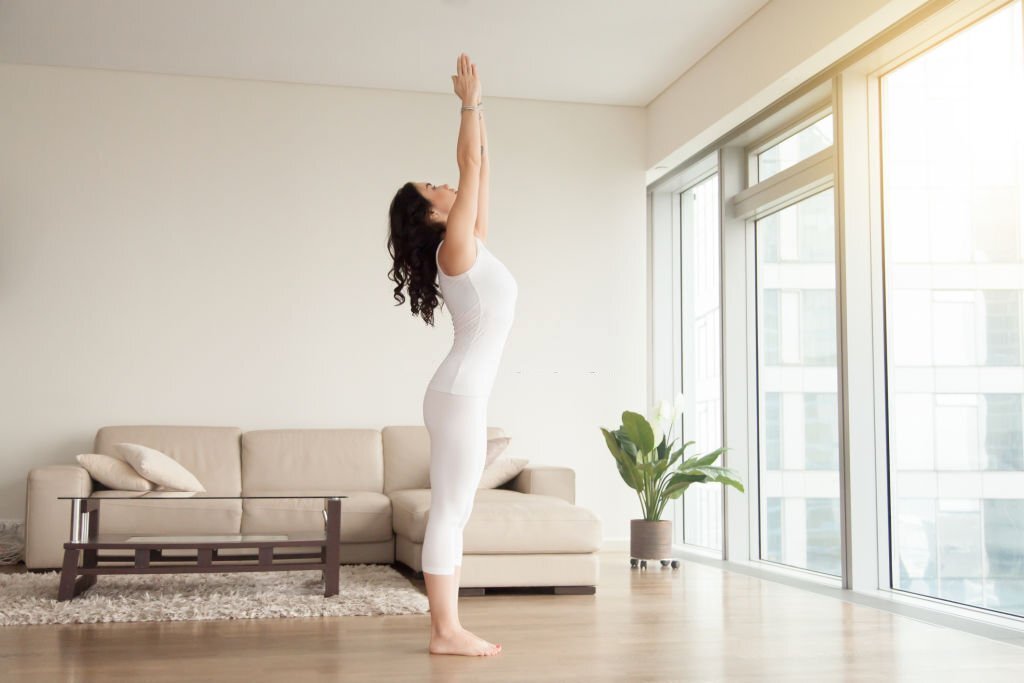
The first essential pose for beginners is the Mountain Pose. Tadasana, or Mountain Pose, is a foundational pose that helps improve posture and alignment. Maintain an upright posture with your feet positioned at hip-width distance, while allowing your arms to rest in a relaxed position beside your body.Engage your core, roll your shoulders back, and lengthen your spine. Imagine yourself rooted like a mountain, feeling grounded and stable. This pose not only helps in improving your posture but also brings a sense of confidence and strength.
Child’s Pose (Balasana)
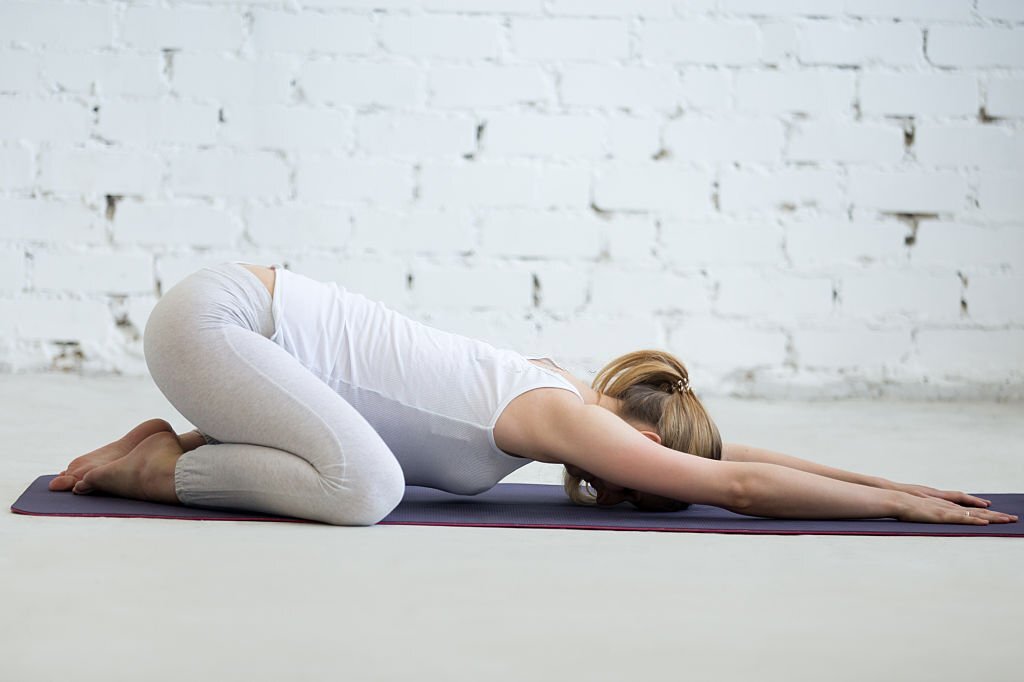
Child’s Pose, or Balasana, is a gentle resting pose that helps release tension and calm the mind. Kneel on the floor, sit back on your heels, and slowly lower your torso down, bringing your forehead to the mat. You have two options for your arms: you can extend them forward or keep them relaxed by your sides. Breathe deeply and surrender to the pose. Child’s Pose is a perfect pose for beginners to relax, restore energy, and find a sense of inner peace during their practice.
Downward-Facing Dog (Adho Mukha Svanasana)
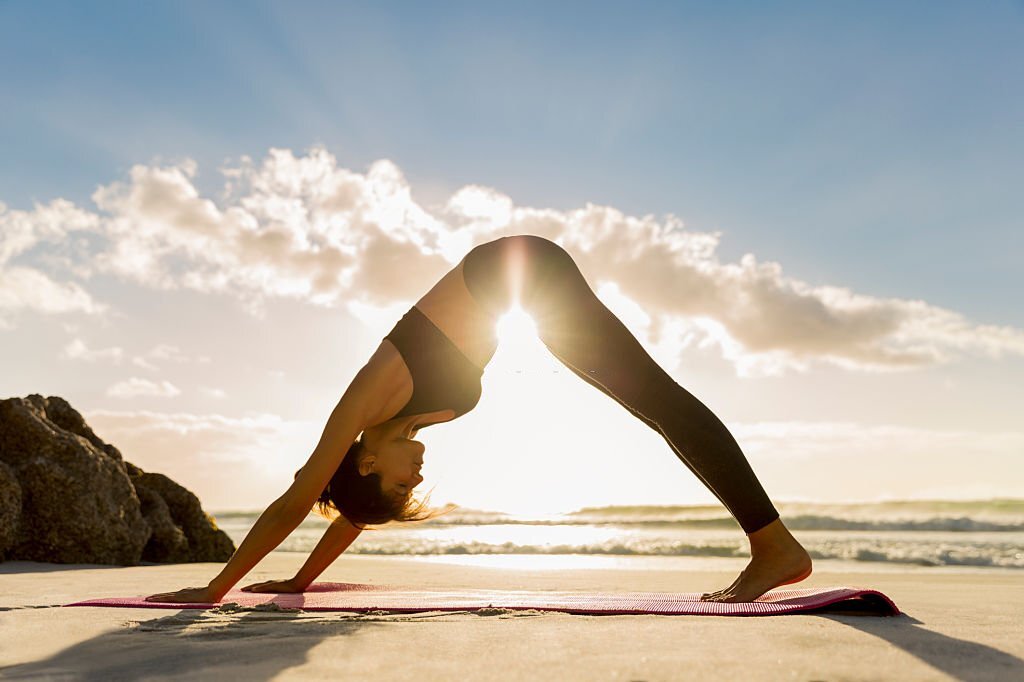
Downward-Facing Dog, or Adho Mukha Svanasana, is a rejuvenating pose that stretches the entire body. Assume a hands and knees position, with your toes tucked under, and raise your hips upwards and backwards. Firmly press your palms into the mat as you elongate your spine. Keep your heels slightly lifted or aim to bring them closer to the floor. This pose helps in strengthening the arms, shoulders, and legs while also increasing flexibility in the hamstrings and calves.
Warrior I (Virabhadrasana I)
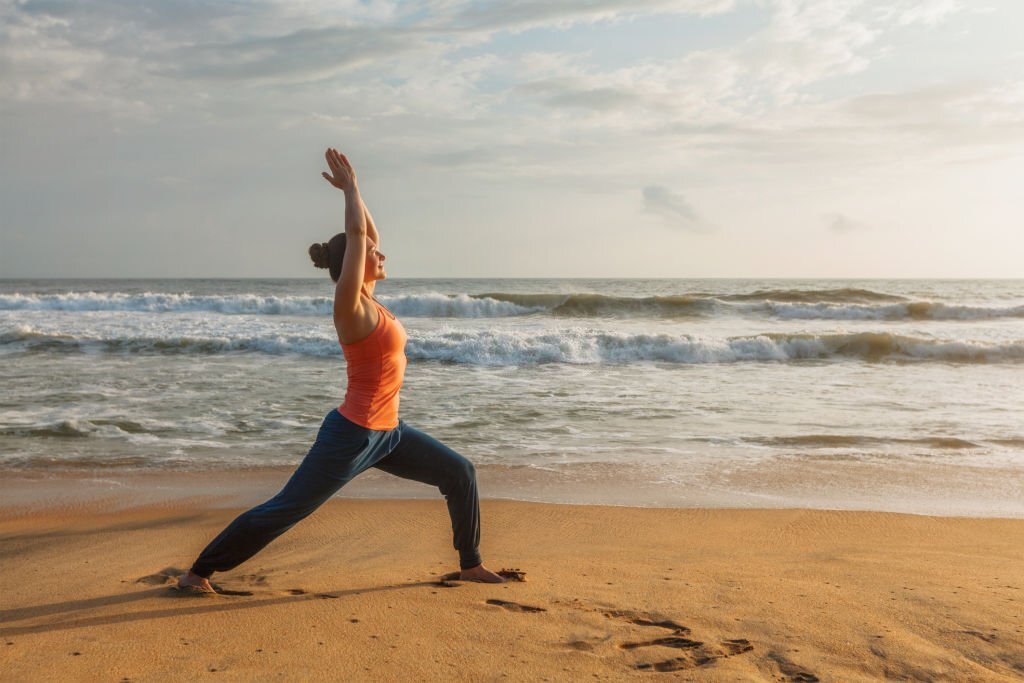
Warrior I, or Virabhadrasana I, is an empowering pose that builds strength and stability. Step one foot forward and lunge, ensuring your knee is directly above your ankle. Rotate your back foot at a slight angle. Raise your arms overhead, keeping your shoulders relaxed. Sink into the pose and feel the energy of a warrior. Warrior I enhances leg strength, promotes chest opening, and cultivates better balance. It also cultivates a sense of determination and focus, both physically and mentally.
Tree Pose (Vrksasana)
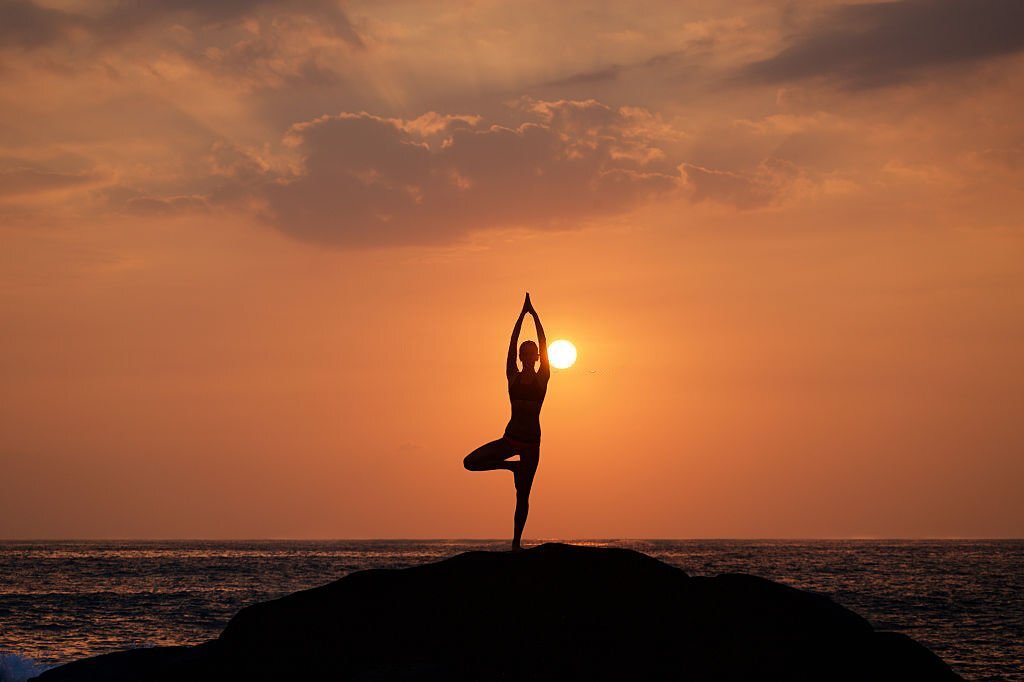
Tree Pose, or Vrksasana, improves balance and focus. Maintain an upright posture with your feet firmly grounded. Shift your weight onto one leg and place the sole of your other foot on your inner thigh, avoiding the knee. Place your hands in a prayerful gesture, pressing them together at the center of your chest, near your heart. Find a steady gaze and embrace your inner stability. Tree Pose not only strengthens the leg muscles but also enhances concentration and mind-body coordination.
Bridge Pose (Setu Bandhasana)
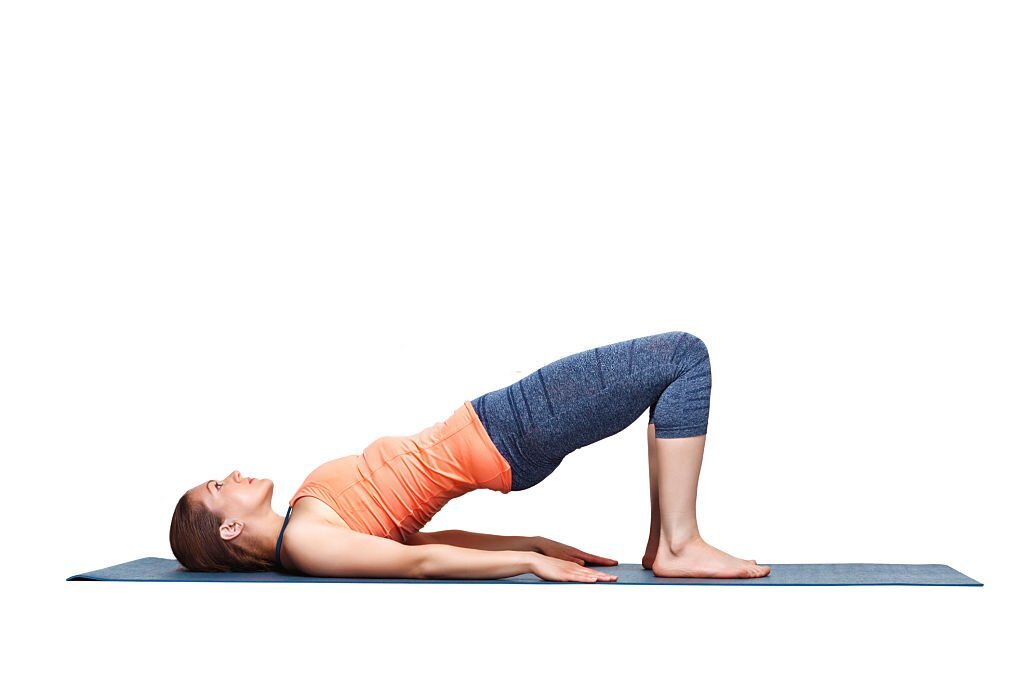
Bridge Pose, or Setu Bandhasana, strengthens the back and opens the chest. Lie in a supine position with your knees bent and your feet planted firmly on the ground. Keep your arms resting alongside your body, with your palms facing downward. Push through your feet, lifting your hips off the mat, and forming a bridge-like shape with your body. Maintain this position for a few breaths, activating your glutes and thighs. Bridge Pose helps in improving spinal flexibility, alleviating lower back pain, and reducing stress and anxiety.
Cat-Cow Pose (Marjaryasana/Bitilasana)

Cat-Cow Pose, or Marjaryasana/Bitilasana, is a gentle flow that stretches and strengthens the spine. Begin by positioning yourself on all fours, with your hands and knees resting on the ground in a tabletop stance. As you inhale, arch your back, lifting your tailbone and gaze towards the ceiling, creating a “U” shape with your spine (Cow Pose). As you exhale, round your back, tuck your tailbone, and drop your head towards the floor, resembling a cat stretching (Cat Pose). Repeat this flow several times, syncing your breath with the movements. Cat-Cow Pose helps in releasing tension in the spine, improving spinal flexibility, and promoting a sense of relaxation.
Cobra Pose (Bhujangasana)
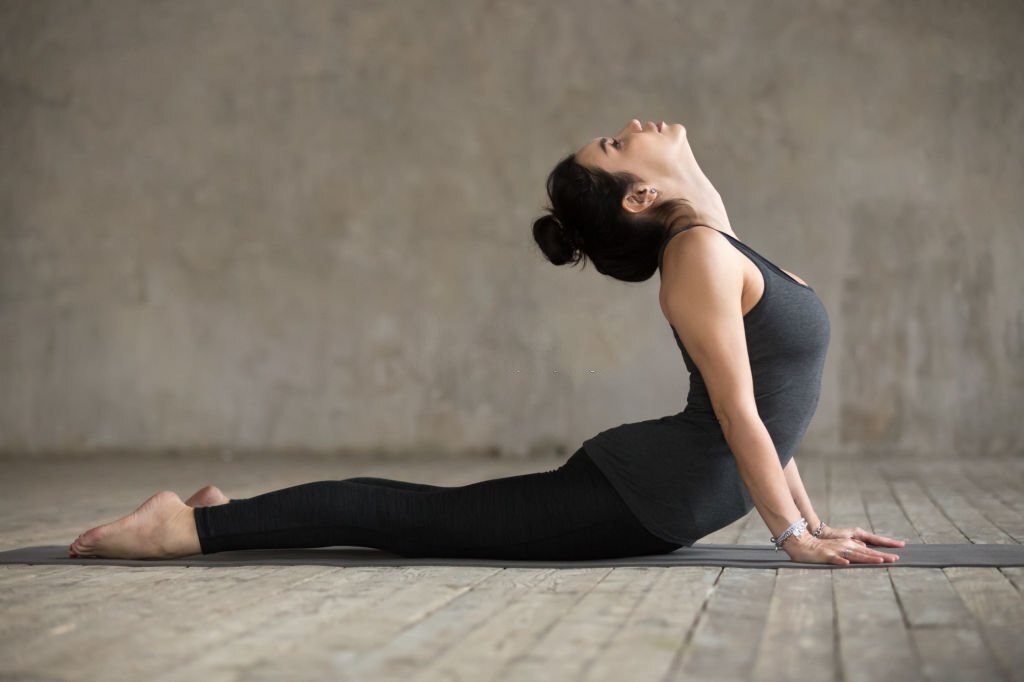
Cobra Pose, or Bhujangasana, helps strengthen the back muscles and open the chest. Lie on your stomach with your legs extended and the tops of your feet pressing into the mat. Place your hands underneath your shoulders, fingers spread wide. Inhale and gently lift your chest off the ground, keeping your gaze forward and shoulders relaxed. Press the tops of your feet into the mat for added stability. Hold the pose for a few breaths and slowly release back down. Cobra Pose improves spinal strength, stretches the abdominal muscles, and enhances overall posture.
Corpse Pose (Savasana)

Corpse Pose, or Savasana, is a final relaxation pose that allows your body to integrate the benefits of the practice. Lie flat on your back with your legs extended and arms relaxed by your sides, palms facing up. Relax your gaze and inhale deeply, allowing the breath to flow in a slow and controlled manner. Allow your body to melt into the mat and release any tension or stress. Stay in this pose for several minutes, focusing on deep relaxation and inner stillness. Savasana rejuvenates the body and mind, promotes a state of deep relaxation, and allows for complete integration of the practice.
Benefits of Regular Yoga Practice
Regular yoga practice offers numerous benefits for beginners and experienced practitioners alike. It improves flexibility, strength, and balance, enhancing overall physical fitness. Yoga also enhances mental clarity, reduces stress and anxiety, and promotes a sense of inner calm and well-being. It can help alleviate chronic pain, improve sleep quality, and boost immune function. With consistent practice, beginners can experience increased body awareness, improved posture, and a deeper connection between the mind, body, and spirit.
Conclusion
Starting a yoga journey as a beginner can bring about a sense of excitement and fulfillment. By incorporating these ten essential yoga poses into your practice, you will establish a strong foundation and gradually build your skills and confidence. Remember to listen to your body, breathe deeply, and practice with mindfulness. As you continue your yoga journey, explore other poses and variations to expand your practice further. Enjoy the process and embrace the transformative power of yoga in your life.
FAQs (Frequently Asked Questions)
Q1. Can I practice yoga if I’m not flexible?
Ans: Certainly! Yoga is inclusive and suitable for individuals of various fitness levels and body types. Flexibility is not a prerequisite for initiating a yoga practice. Through consistent engagement, your flexibility will naturally improve and progress over time.
Q2. How often should I practice yoga as a beginner?
Ans:As a beginner, aim for at least two to three yoga sessions per week to establish a consistent practice. Listen to your body and adjust the frequency based on your comfort level and schedule.
Q3. Is special equipment necessary for practicing yoga?
Ans: No, special equipment is not required to begin practicing yoga. All you need is a yoga mat and comfortable clothing, which are sufficient to get started. As you advance in your practice, you may opt to include props like blocks, straps, or bolsters to enhance and support your yoga experience.
Q4. Can yoga help with stress and anxiety?
Ans: Yes, yoga can be an effective tool for managing stress and anxiety. Through the combination of physical movement, deep breathing, and mindfulness, yoga helps calm the nervous system and promotes relaxation. Regular practice can reduce stress levels and increase mental clarity and emotional well-being.
Q5. What is the typical timeframe to observe results from regular yoga practice?
Ans: The outcomes of yoga practice differ from individual to individual. Some individuals may notice improvements in flexibility, strength, and overall well-being after just a few sessions. However, it’s important to approach yoga with patience and consistency. With regular practice over time, you will experience the transformative benefits of yoga in your body, mind, and spirit.
